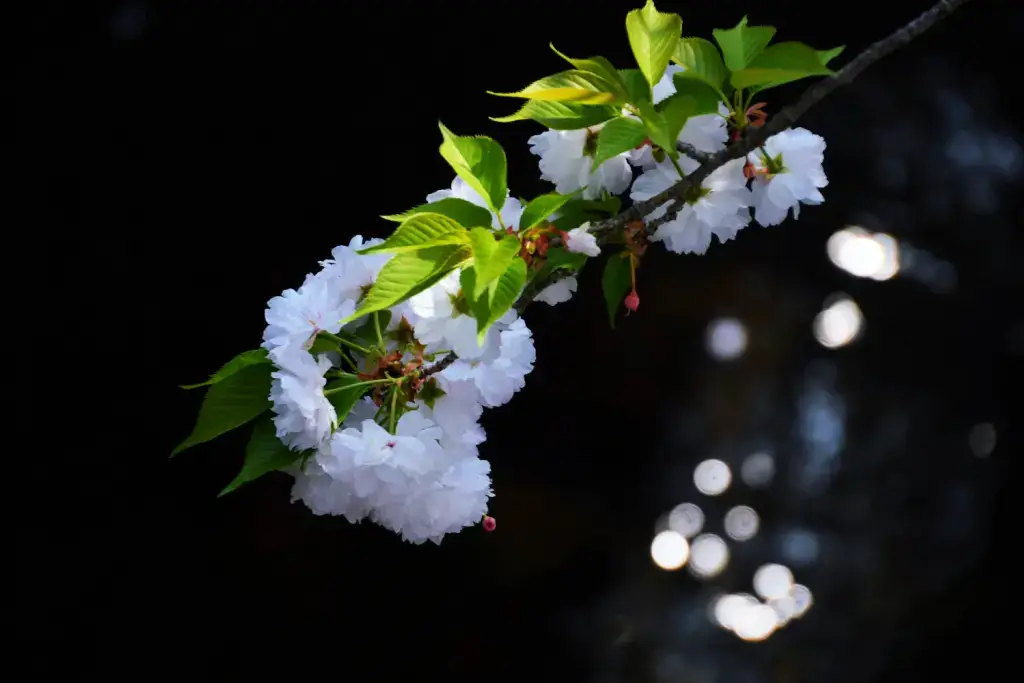Ōita-ken (Oita Prefecture) is famous for its rejuvenating onsen (hot springs), ancient stone Buddhas, and beautiful forests and mountains. However, it’s also home to sakura (cherry blossoms) trees, drawing crowds for hanami (flower viewing) parties during the day and night. And while Ōita is undoubtedly a popular spot for yozakura (nighttime cherry blossom viewing), there are many other destinations, some well-known and others local secrets. We present five beautiful places to see yozakura.
Table of Contents
ToggleIsshinji Temple (Ōita Prefecture)
Isshinji Temple is an architectural marvel with several giant Buddhist statues, including Hudomyouo, Bhaisajyaguru, and Acala. However, its main attraction is the yaezakura (multi-layered cherry blossom) trees. Opening from mid- to late-April, their colors range from pink to green to yellow. An overlook showcases the sakura no unkai (sea of cherry blossoms) in full glory.
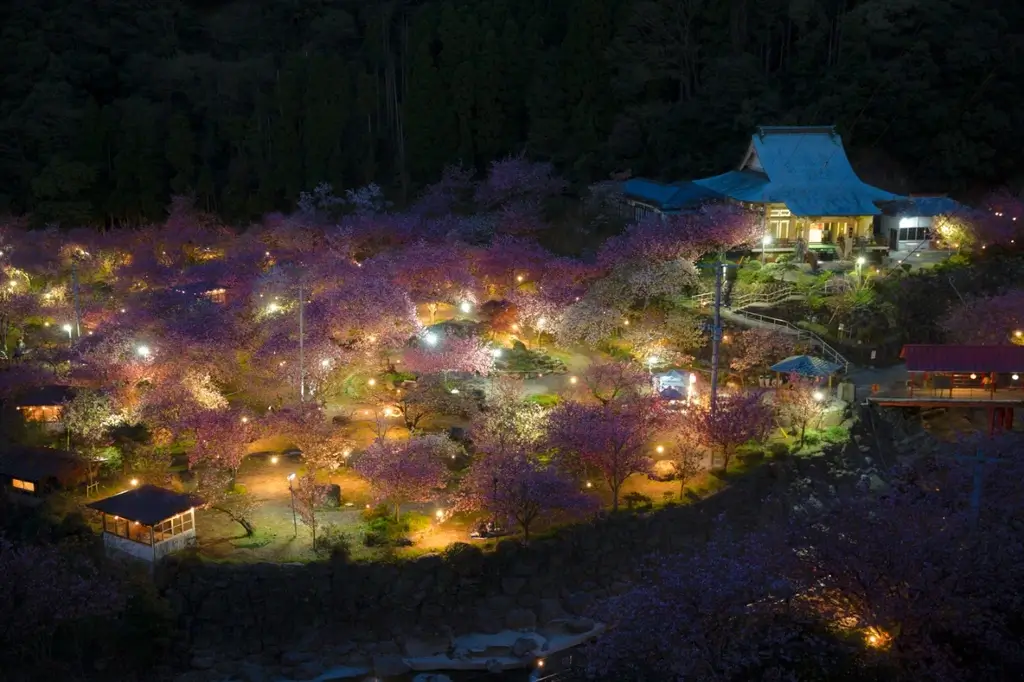
Isshinji Temple is a 30-40 minute drive from Oita Airport (大 分). The nearest bus stop is Fujimigoaka Minami, about 52 minutes away. The temple is open daily from 9 am to 5 pm, with late business hours until 9 or 9:30 pm. Admission until 5 pm for 12 and up is 800 yen (5 USD), while entry for late business hours costs 1000 yen (7 USD).
Mifuneyama Rakuen (Saga Prefecture)
This next yozakura viewing spot spans 50 hectares (124 acres) and boasts 2000 cherry trees, including Yoshino and Oshima. At night, 0.8 hectares (2 acres) are illuminated in Kyushu’s biggest light show. Visitors can also enjoy konacha (powder tea) and refreshments at the Hagino Ochaya Tea House. Out-of-town guests may stay at one of two ryokans (traditional-style hotels), Mifuneyama Rakuen Hotel and Onyado Chikurintei.
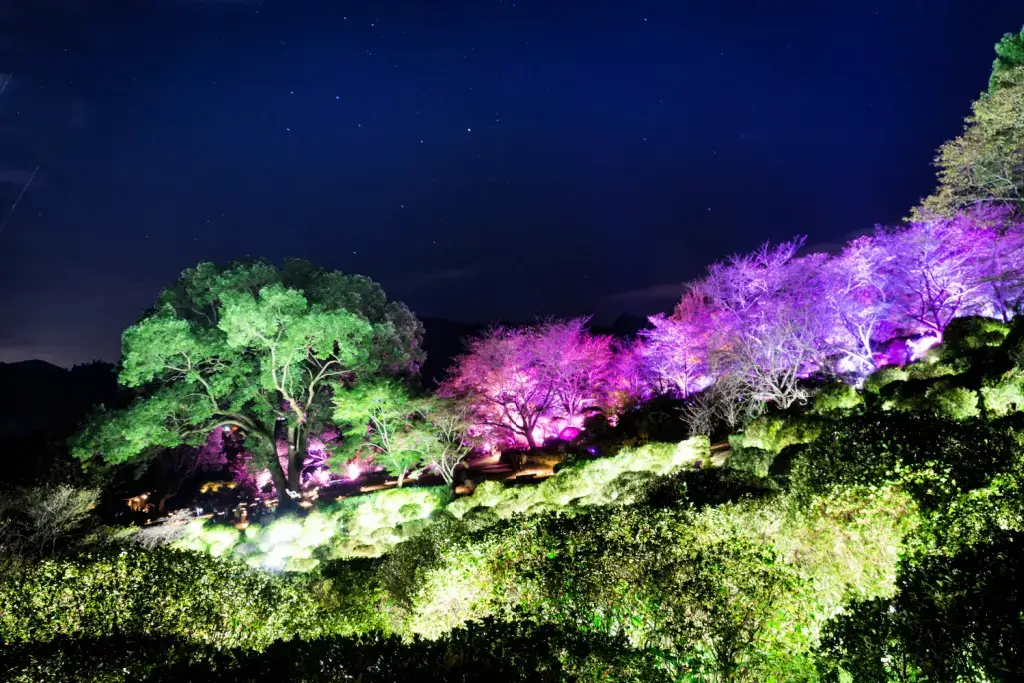
Mifuneyama Rakuen is 50 minutes away by car from Saga Airport. It’s open daily, even during rainy weather, from 8 am to 6:30 pm. Yozakura dates for 2024 are March 15 to April 7 from 6:30 to 10 pm. Entry is 600 yen (4 USD) for adults; it’s free for ryokan guests.
Utsubuki Park (Tottori Prefecture)
Without a doubt, Utsubuki Park is the perfect place for pictures, with overhead views offered at the observatory. 2000-4000 cherry trees grow here, including Yoshino and shidarezakura (weeping cherry). What also sets Utsubuki Park apart from other yozakura viewing sites are the bonbori (lantern) illuminations. Moreover, the sakura blooming overlaps with the Kurayoshi Spring Festival.
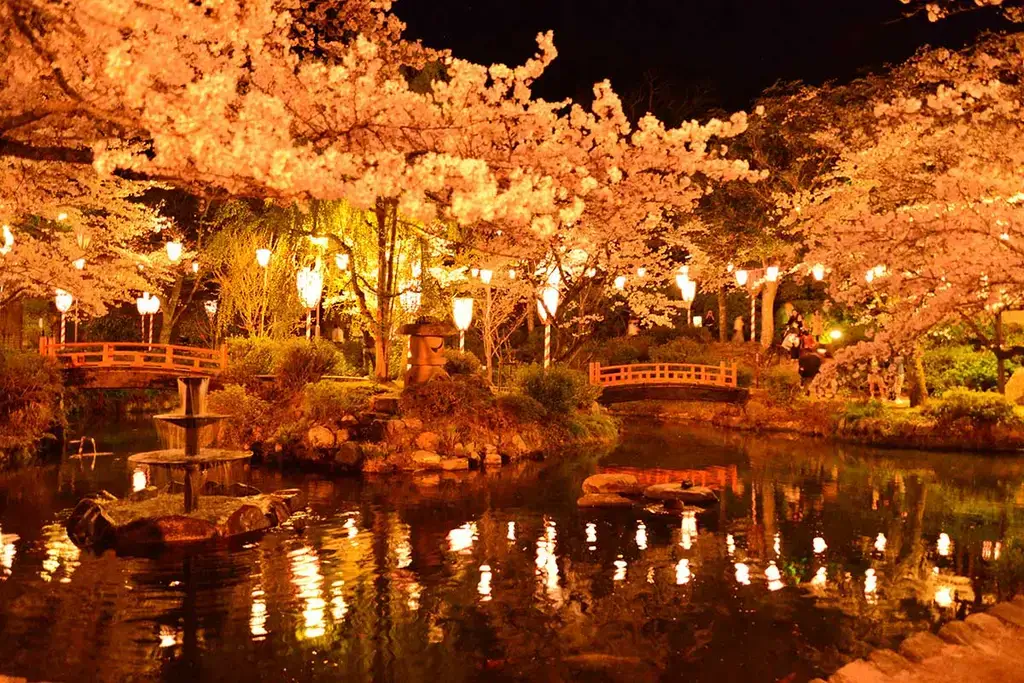
Generally, there are two bus routes from JR Kurayoshi station: one ending at Akagawara Shirakabedozo (a 10-minute walk from Utsubuki Park) and one ending at Shiyakusho Utsubuki Koen Iriguchi (17 minutes away). Moreover, admission is free, and Utsubuki Park is open 24 hours every day. Dates for 2024 have yet to be released; in 2023, the lanterns were lit from 6 to 10 pm from March 24 to April 16 and 6 to 8 pm from April 28 to May 7.
Are you looking for some fantastic snacks for cherry blossoms at night? Check out Sakuraco! Sakuraco delivers traditional Japanese snacks, teas, and sweets from local Japanese makers directly to your door.
Himeji Castle (Hyogo Prefecture)
Also called Hakuro-jo (White Egret Castle), this UNESCO World Heritage Site boasts 83 buildings and the gorgeous Koko-en Garden nearby. In spring, the grounds transform under the blossoms of 1000-2000 cherry trees, visible outside the castle walls. While it’s become busier, Himeji Castle is still one of the best places for yozakura viewing due to its illumination. There’s also a festival in Nishinomaru Garden. However, the public doesn’t usually get access to it.
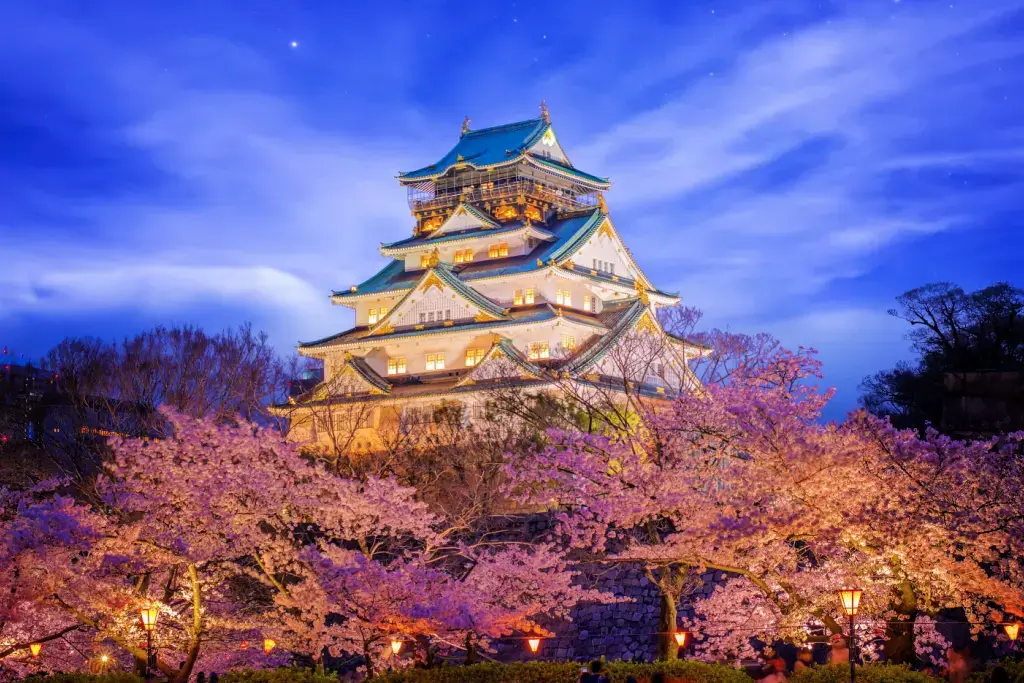
Himeji Castle is a 20-minute walk from the JR Sanyo Honsen Himeji Station, accessible by bus or train. Kokoen Garden is open 24 hours a day, while Himeji Castle is open from 9 am to 5 pm almost every day. Combined tickets for both locations cost 1050 yen (7 USD) for adults. Yozakura viewing parties only take place from March 29 to April 7.
Maruyama Park (Kyoto Prefecture)
Finally, Kyoto’s Maruyama Park offers a natural hideaway in the Gion Corner, enticing visitors with teahouses, vendors selling food and other wares, and breathtaking scenery. Although it can get crowded, it’s still a peaceful location. In addition to 680 cherry trees, Maruyama Park is famous for its “Weeping Cherry of Gion.” This shidarezakura is 39 feet (12 meters) high and over 80 years old, growing from a parent tree over 200 years old. It is awe-inspiring when lit up at night.
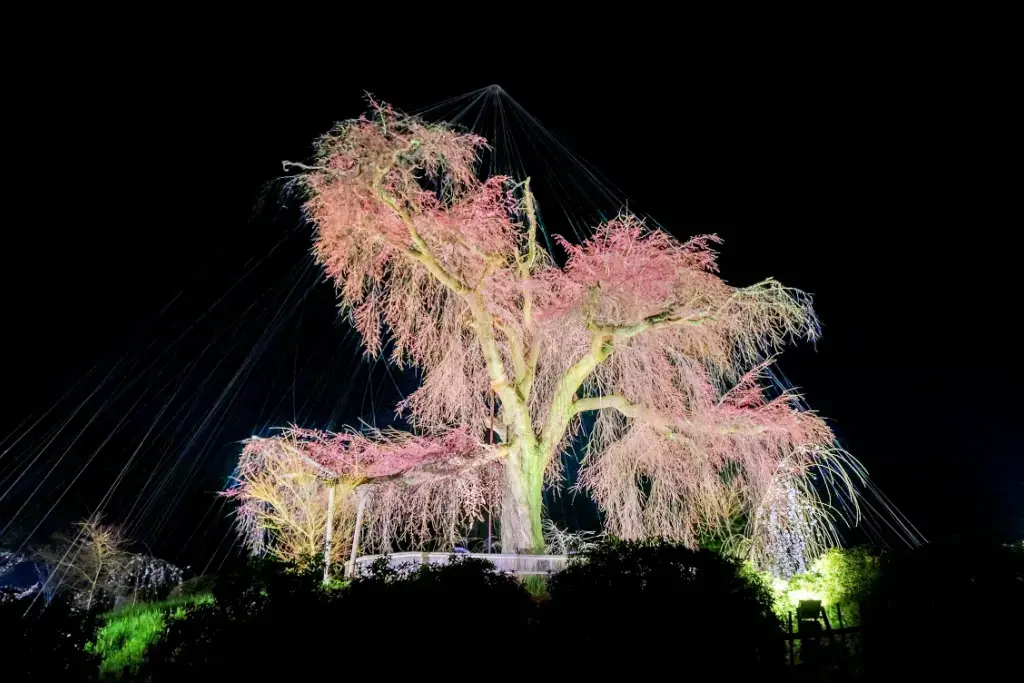
Maruyama Park is five to ten minutes from the Gion bus stop. It’s also open for 24 hours every day, with the lights turned on from 6 to 10 pm, and entry is free. According to the forecast, Kyoto’s cherry blossoms will flower on March 23 and fully bloom by April 1.
Why should I see yozakura in places like Oita Prefecture?
All in all, each location, especially in Oita, has unique features that set the yozakura viewing experience apart. From Maruyama Park’s elegant Weeping Cherry of Gion to Isshinji Temple’s magical sakura no unkai, they’re spectacular in their way.
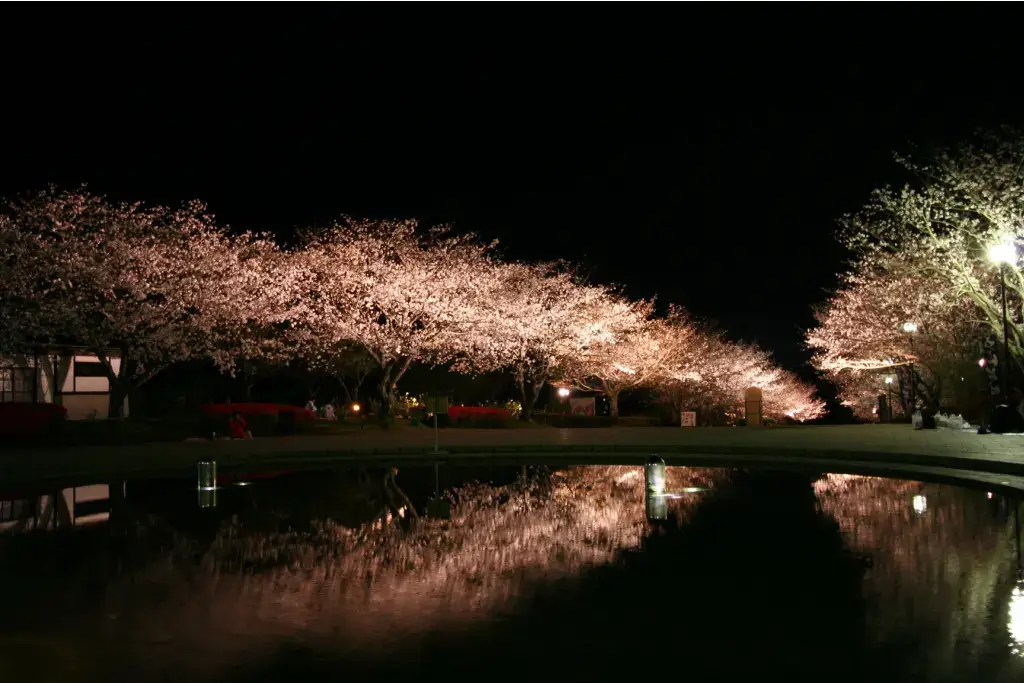
Nearby historical buildings such as Isshinji Temple and Himeji Castle offer glimpses into another era. Visitors can learn more about Japanese culture by staying in a ryokan in Mifuneyama Rakuen or attending the Kurayoshi Spring Festival at Utsubuki Park. Have you visited any of these places in Oita? Do you know any other spots where you can see yozakura? Share your recommendations in the comments.


